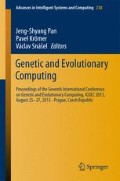Abstract
The nullor-mirror pathological elements have been found useful in solving circuit analysis and design problems. They are further used to ideally represent various popular analog signal-processing properties that involve differential or multiple single-ended signals by utilizing the concept of floating mirror elements. For applying nodal analysis to the circuit containing such active devices with differential or multiple single-ended signals, we propose an efficient systematic analytical technique which directly performs symbolic analysis on the simpler RLC-nullor-floating mirror representations of circuits rather than their RLC-two-terminal pathological element-based counterparts. It releases the limitation of recently proposed symbolic analysis approaches and use simpler models which may be conductive to achieving high-performance symbolic nodal analysis. The feasibility and validity of the proposed method are demonstrated by practical circuit examples.
Access this chapter
Tax calculation will be finalised at checkout
Purchases are for personal use only
Preview
Unable to display preview. Download preview PDF.
References
Tellegen, B.D.H.: La recherche pour una série complète d’éléments de circuit ideauxnonlinéaires. Rendiconti del Seminario Matematico e Fisico di Milano 25, 134–144 (1954)
Carlin, H.J.: Singular network elements. IEEE Trans. Circuit Theory CT-11, 67–72 (1964)
Schmid, H.: Approximating the universal active element. IEEE Trans. Circuits Syst. II 47(11), 1160–1169 (2000)
Carlosena, A., Moschytz, G.S.: Nullators and norators in voltage tocurrent mode transformations. Int. J. Circuit Theory Applicat. 21(4), 421–424 (1993)
Kumar, P., Senani, R.: Bibliography on nullors and their applications in circuit analysis, synthesis and design. Anal. Integr. Circuits Signal Process. 33(1), 65–76 (2002)
Soliman, A.M., Saad, R.A.: The voltage mirror-current mirror pairs as a universal element. Int. J. Circuit Theory Appl. 38(8), 787–795 (2010)
Saad, R.A., Soliman, A.M.: On the systematic synthesis of CCII-based floating simulators. Int. J. Circuit Theory Appl. 38(9), 935–967 (2010)
Saad, R.A., Soliman, A.M.: A new approach for using the pathological mirror elements in the ideal representation of active devices. Int. J. Circuit Theory Appl. 38(2), 148–178 (2010)
Soliman, A.M.: Pathological representation of the two-output CCII and ICCII family and application. Int. J. Circuit Theory Appl. 39(6), 589–606 (2011)
Sanchez-Lopez, C., Fernandez, F.V., Tlelo-Cuautle, E., Tan, S.X.D.: Pathological element-based active device models and their application to symbolic analysis. IEEE Trans. Circuits Syst. I: Reg. Papers 58(6), 1382–1395 (2011)
Tlelo-Cuautle, E., Sanchez-Lopez, C., Moro-Frias, D.: Symbolic analysis of (MO)(I)CCI(II)(III)-based analog circuits. Int. J. Circuit Theory Appl. 38(6), 649–659 (2010)
Wang, H.Y., Huang, W.C., Chiang, N.H.: Symbolic nodal analysis of circuits using pathological elements. IEEE Trans. Circuits Syst. II 57(11), 874–877 (2010)
Huang, W.C., Wang, H.Y., Cheng, P.S., Lin, Y.C.: Nullor equivalents of active devices for symbolic circuit analysis. Circuits Syst. Signal Process. 31, 865–875 (2012)
Ibrahim, M.A., Kuntman, H., Cicekoglu, O.: New second-order low-pass, high-pass and band-pass filters employing minimum number of active and passive elements. In: Proc. Int. Symp. Signal Circuits Syst., pp. 557–560 (2003)
Svoboda, J.A.: A linear active network analysis program suitable for a class project. IEEE Trans. Education E-27(1), 21–25 (1984)
Author information
Authors and Affiliations
Corresponding author
Editor information
Editors and Affiliations
Rights and permissions
Copyright information
© 2014 Springer International Publishing Switzerland
About this paper
Cite this paper
Wang, HY., Chang, SH., Chiang, NH., Nguyen, QM. (2014). Symbolic Analysis Using Floating Pathological Elements. In: Pan, JS., Krömer, P., Snášel, V. (eds) Genetic and Evolutionary Computing. Advances in Intelligent Systems and Computing, vol 238. Springer, Cham. https://doi.org/10.1007/978-3-319-01796-9_41
Download citation
DOI: https://doi.org/10.1007/978-3-319-01796-9_41
Publisher Name: Springer, Cham
Print ISBN: 978-3-319-01795-2
Online ISBN: 978-3-319-01796-9
eBook Packages: EngineeringEngineering (R0)

